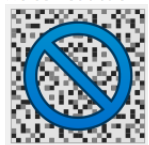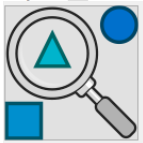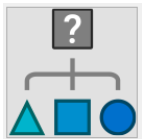|
|
|
| Overview |
|
Sapera Processing is a Windows®- based comprehensive programming
library for image processing and analysis designed to simplify vision
application development, Sapera Processing offers a comprehensive
set of optimised tools, as a suite or standalone. While Sapera Processing
is optimised for use with Dalsa Coreco's boards, it is hardware
independent to facilitate portability across 3rd party platforms.
Sapera uses high-performance C++ classes and MMX, SSE (streaming
SIMD Extensions) and SSE2 to meet the challenging operational requirements
of today's imaging systems. The Sapera Processing tool set includes:
Image Processing Libraries
A series of highly optimised basic image processing functions, including:
filtering, geometry, measurement, morphology, point-to-point, segmentation,
transform operations and subpixel edge detection.
Search (pattern matching)
Matches patterns to determine location and alignment, and includes
correlation-based and geometric-based algorithms to achieve accuracy
up to 1/50th of a pixel. Designed to work under poor and uneven
lighting conditions, Search's fast, robust and accurate algorithms
are well suited for demanding alignment applications.
Optical Character Recognition (OCR)
Supports both solid and dot matrix fonts, standard and user trainable
fonts, scale/ aspect ratio invariant, works well on degraded and
poorly illuminated images.
Barcode/Decoding
Locates and decodes "UNI" and 2-dimensional bar codes
for a variety of standard codes. Designed to operate on degraded
and poorly illuminated images, the Barcode tool includes rapid,
robust algorithms and functions, and is fully rotational/scale invariant.
Blob Analysis
Separates foreground objects from the background and calculates
more than 50 spatial and grayscale blob features, including: area,
location, perimeter, elongation, roundness, convexity, bounding
box and orientation.
Artificial Intelligence
Artificial intelligence (AI) inference based on models imported
from AstrocyteTM training tool.
|
| Features |
- Hardware independent, image acquisition,
image processing/analysis and artificial intelligence library
- Supports Area-scan and Line-scan, monochrome and color, 2D and 3D
cameras
- Power tools for tasks like image recognition, object identification,
2D/3D measurement, machine guidance, surface inspection, object segmentation,
object tracking and others
- Designed for machine vision OEMs, System Integrators and End users
- Modular components supporting C++ and .NET languages
- Multi-Core optimisation supported on single or multiple CPU configurations
- User-friendly non-programming graphical environment to quickly prototype
and test drive application specific imaging tools
|
Sapera Processing includes a series
of classes to perform AI inference on models generated by
Astrocyte™ (available only with Sapera AI license).
|
| |
|
Noise Reduction
|
|
|
Noise reduction intends to deliver a higher-quality
image from its original state. It is an important component
in applications such as digital photography, medical image
analysis, remote sensing, surveillance and digital entertainment.
|
|
|
|
|
Segmentation
|
|
|
Image segmentation is important component
in computer vision and is used for defect sorting/qualification,
food sorting, shape analysis, etc. Image segmentation involves
dividing input image into segments to simplify image analysis.
|
|
|
|
|
Object Detection
|
|
|
Object Detection involves identifying one
or more objects of interest in an image. Object Detection
is used to solve problems like presence detection, object
tracking, defect localisation and sorting, etc.
|
|
|
|
|
Object Classification
|
|
|
Classification involves predicting which
class an item belongs to. Classification is used to solve
problems like defect identification, character recognition,
presence detection, food sorting, etc.
|
| Anomaly Detection |
 |
Anomaly Detection is the identification
of rare occurrences, items or events of concern due to their
differing characteristics from majority of the processed data.
Anomaly Detection is a binary classifier dedicated to identifying
good and bad samples. Unlike regular classification Anomaly
Detection can train on unbalanced datasets (i.e. large number
of good samples and small number of bad samples). Anomaly
Detection is used on any application involving identification
of defects on a surface or scene.
|
|
|
| |
|
|









